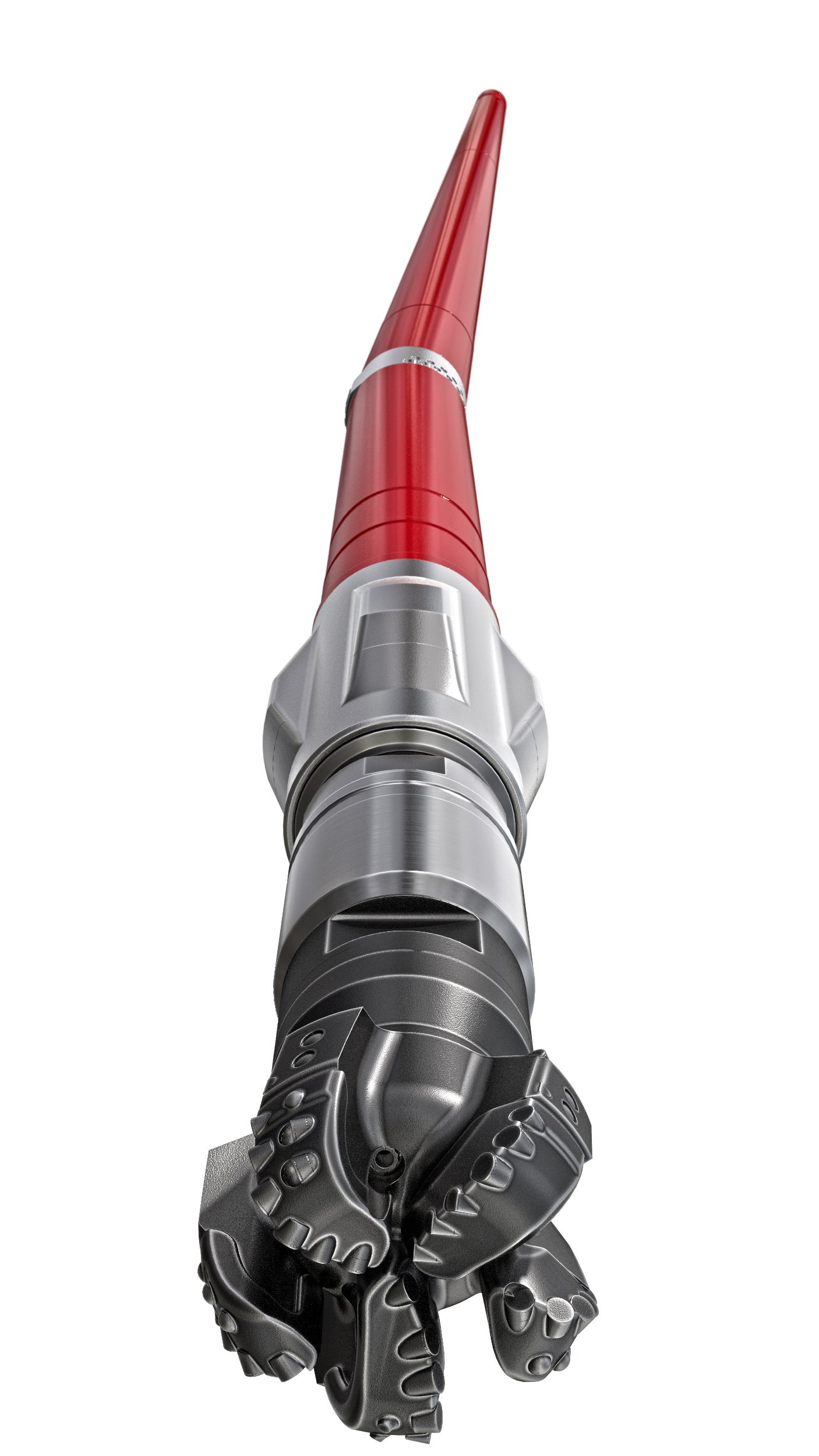
(Source: Marc Morrison/marcmorrison.com)
[Editor's note: A version of this story appears in the September 2020 edition of E&P Plus. It was originally published Aug. 31, 2020. Subscribe to the magazine here.]
Operators strive to drill faster and more reliably regardless of the drilling environment. This has increased the demand for more power generation by a mud motor. For shoe-to-shoe drilling performance and improved total well delivery, it is vital for the focus to be on the motor as a system. Historically, the focus on motors has been to improve performance of individual sub-systems or components with little focus on overall system performance. As a result, one of the trends is that the power section has outpaced the rest of the motor in terms of torque capability and horsepower.
With advances in elastomer technology and power section design, the industry has developed high-performance power sections that can run at higher flow rate and higher differential pressure resulting in increased horsepower.
The transmission and bearing section has now become the weaker link in the chain along with the motor connections. A true system level design requires consideration of the overall bottomhole assembly (BHA), such as motor only or motor-assisted rotary steerable system (RSS); applications (vertical only, curve and lateral, or lateral only); downhole temperatures; and drilling parameters. A clear understanding of the loads on the BHA in various applications and rig constraints in terms of flow rate, pressure and torque capability is critical to ensuring a successful drilling campaign.
Designing a new motor
In 2019 Halliburton introduced its Motors Center of Excellence (MCE), located in Houston and Dammam, Saudi Arabia, to combine specialized engineering and manufacturing capabilities to customize motor designs for specific basin challenges. This allows Halliburton to take full ownership of drilling motor design, manufacturing and repair, which accelerates differentiated products, reduces manufacturing time, repairs, maintenance costs and inventory, and transforms the business model from product focus to service delivery.
The MCE was formed to think of the motor as a system within the BHA and bring together established competencies in system analysis and design, tribology/bearing technology, elastomer chemistry and drive train design. The MCE includes two new power section stator reline facilities that are equipped with state-of-the-art technology and equipment and use proprietary processes for adhesive application, elastomer injection and curing. The laser technology provides high-resolution inspection to assure quality control that the end product meets design intent and customer needs.
With this system focus, the NitroForce high-torque, high-flow motor was developed as an optimized overall system of the power section, transmission and bearings. The system’s key enabler is the use of advanced BHA modeling at the system and sub-system level to match power section and transmission to optimize motor performance with a goal of reliably delivering shoe-to-shoe drilling performance.
The NitroForce motor improves ROP by providing the highest horsepower and by enabling a higher weight on bit (WOB). The high flow rate, stronger transmission design and high-strength elastomers work together to increase bit speed and torque output, which increases power. Halliburton’s mud-lubricated polycrystalline diamond compact thrust bearing design withstands higher thrust loads, enabling a higher WOB. The specific power section configuration is designed to maximize reliability and horsepower while ensuring that the transmission, bearings and connections are designed to meet the requirements of the system performance.
The matched system of the motor provides optimized performance and reliability, with a power section and lower end that are designed to work together. Both the power section and lower end have a high flow rate to ensure that hole cleaning is not restricted by tool design. The motor delivers longer runs with less wear by using the Charge high-performance elastomers (HPEs) and the stronger transmission, power section and bearings.

Developed in the MCE, the durability of the Charge HPE improves reliability and increases the life of the stator so the motor can drill farther. It has low hysteresis (internal heat generation) while drilling with reliable rubber-to-metal bond and high abrasion resistance. The NitroForce motor transmission design and bearing technology enables the ability to operate at high flow and high torque.
Drilling longer laterals
Reducing the limitations of conventional motors enables greater flexibility in well planning and BHA design. The extended life of the NitroForce motor enables longer laterals—those more than 10,000 ft—to help reduce costs by drilling with fewer runs and tools. Operators can reduce runs further by drilling the curve and lateral in one run with a fatigue-resistant transmission and more reliable bearings. These stronger bearings also withstand higher side loads to enable higher doglegs.
In the U.S. Midcontinent region, the NitroForce motor was able to drill 10,000 ft in one run to achieve a record with 30% more ROP of 105 ft/hr in the basin. In Canada, a matched system BHA with a proprietary NitroForce power section design delivered the lateral in a single run, when historically it used to take three BHAs to deliver the well. Using a systems approach, a matched motor with a bit was designed with the motor configured to deliver increased power and torque. This enabled completion of the lateral in one run as compared to multiple trips that increased the cost of drilling shoe to shoe. The matched system reduced lateral drill time by more than 25%. In a motor-assisted RSS application in the U.S., the NitroForce motor outperformed the competition to drill the fastest well and set a new ROP record consecutively, which reduced six days of rig time.
For an operator in the Middle East, the challenge was to improve drilling performance and reduce trips. The team worked closed with the customer to come up with an engineered solution that included a motor-assisted RSS. The NitroForce motor powered an RSS to drill more than 19,000 ft with consistent shoe-to-shoe drilling, and it set a new ROP record in the area run over run for three wells. The operator reduced well time by six days from authorization for expenditure with zero nonproductive time.
By developing a true system level design with the NitroForce motor, Halliburton can provide increased power and performance to complete longer laterals faster and with greater control to help operators drill more consistent wells to increase their production.
Recommended Reading
Energy Transition in Motion (Week of Nov. 1, 2024)
2024-11-01 - Here is a look at some of this week’s renewable energy news, including progress on the largest U.S. offshore wind project being developed.
Energy Transition in Motion (Week of Aug. 23, 2024)
2024-08-23 - Here is a look at some of this week’s renewable energy news, including a promising outlook for global offshore wind capacity.
Energy Transition in Motion (Week of Oct. 25, 2024)
2024-10-25 - Here is a look at some of this week’s renewable energy news, including a U.S. Geological Survey-led study pointing to massive estimated lithium reserves in the Arkansas Smackover.
US Offshore Wind Lease Sale Brings in Nearly $22MM in Winning Bids
2024-10-29 - Avangrid Renewables and Invenergy were the two provisional winners of four lease areas, according to the Bureau of Ocean Energy Management.
BOEM Greenlights Atlantic Shores South Offshore Wind Project
2024-10-02 - The approval pushes the U.S. closer to its goal of deploying 30 gigawatts of offshore wind energy capacity by 2030.
Comments
Add new comment
This conversation is moderated according to Hart Energy community rules. Please read the rules before joining the discussion. If you’re experiencing any technical problems, please contact our customer care team.




